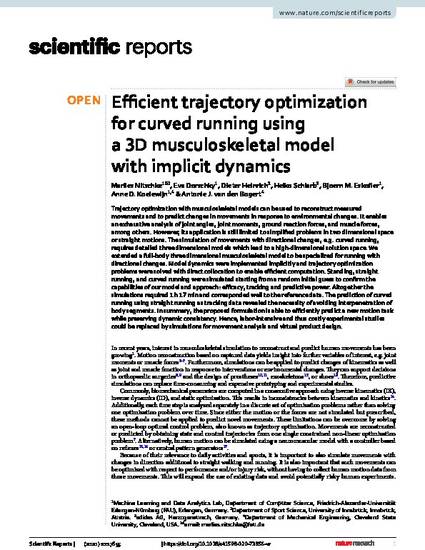
Trajectory optimization with musculoskeletal models can be used to reconstruct measured movements and to predict changes in movements in response to environmental changes. It enables an exhaustive analysis of joint angles, joint moments, ground reaction forces, and muscle forces, among others. However, its application is still limited to simplified problems in two dimensional space or straight motions. The simulation of movements with directional changes, e.g. curved running, requires detailed three dimensional models which lead to a high-dimensional solution space. We
extended a full-body three dimensional musculoskeletal model to be specialized for running with directional changes. Model dynamics were implemented implicitly and trajectory optimization problems were solved with direct collocation to enable efficient computation. Standing, straight running, and curved running were simulated starting from a random initial guess to confirm the capabilities of our model and approach: efficacy, tracking and predictive power. Altogether the simulations required 1 h 17 min and corresponded well to the reference data. The prediction of curved running using straight running as tracking data revealed the necessity of avoiding interpenetration of body segments. In summary, the proposed formulation is able to efficiently predict a new motion task while preserving dynamic consistency. Hence, labor-intensive and thus costly experimental studies could be replaced by simulations for movement analysis and virtual product design.
Available at: http://works.bepress.com/antonie_vandenbogert/125/
